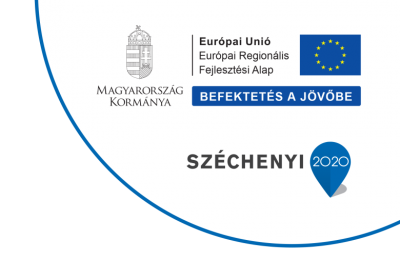On September 30, 2016, the consortium submitted a tender to the National Research Development and Innovation Office and the Ministry of National Economy under the GINOP-2.2.1-15 program under the title “Genetic utilization of the plants of the Pannonian region”.
The project, implemented in the form of a consortium, received a non-refundable subsidy of more than HUF 1.6 billion.
The leader of the consortium is Törökszentmiklós Agricultural Plc., the members of the consortium are also the University of Debrecen, the Hungarian University of Agricultural and Life Sciences, the Grain Research Nonprofit Public Benefit Llc. and the Forestry Institute of the University of Sopron.
The total budget of the program is HUF 1,902,239,337. Based on the submitted application, the amount of support is HUF 1,604,232,583. The remaining HUF 298,006,754 is TM Zrt.’s contribution to the success of the project. The intensity of the support is 84.33%.
The project started on August 11, 2017, with a physical completion date of December 29, 2021. During the implementation of the project, the 22 research topics and research groups, involving a total of 160 researchers and technical personnel, experimented with plants and developed technologies and methods that were intended to preserve and maintain the genetic stock of the plants of the Pannonian region, taking into account the sales possibilities. Apart from the Knowledge Center in Törökszentmiklós, the researches were carried out at the sites and designated research areas of the consortium members.
The program submitted in the tender was built around 6 important objectives:
- Green area management: as a result of the project, a selected stock of woody, perennial herbaceous, annual varieties was born, which, due to their drought tolerance and salt tolerance, can be successfully used in the recultivation of degraded areas.
- Genetic research of plants suitable for arable utilization of sensitive areas: determination of genetic lines of plants that are suitable for arable crop cultivation with sensitive ecology.
- Phyto-remediation and energy plants, soil remediation: the most important task of the sub-program was the selection of the most effective species and the development of methods for the treatment of contaminated soils, with the help of phytoremediation and environmental chemistry tests.
- Plants grown for their active ingredient: the essence of the subprogramme was the utilization of mainly domestic (native and foreign origin cultivated for at least 20 years) and some introduced medicinal species as gene sources.
- Plant protection – Information technology: within the framework of the sub-programme, a new method not previously used in domestic horticultural research work, a purposeful, IT-supported innovation collaboration of research groups was established.
- Agricultural economics: the research established the agricultural economics of the project. On the one hand, it assessed consumer needs for horticultural products and determined the consumer market and segment in which they can be sold, as well as mapped the possible sales channels.
During the course of the project, the following tasks, investments and developments were realized:
- Development of research infrastructure: the Laboratory Building of the Knowledge Park was created on the territory of Törökszentmiklós Agricultural Plc. by renovating and rebuilding an existing building.
- As part of the Knowledge Park, the renovation of an air-conditioning house and the purchase of research equipment, laboratory equipment and machines were also carried out. Various climatic conditions were modeled in the climate house, which served as the basis for several research topics.
- The development of the location of the container site and variety selection for research, and the creation of a demonstration garden were also realized as part of the Knowledge Park in the neighborhood of the two buildings mentioned above.
- Creating an IT background.
- Setting up a plant protection system.
Another important goal of the project was to market the genetic resources of Hungarian plants, primarily in areas with a climate similar to the climate of the Pannonian region.
The target area is the Central Asian part of the Commonwealth of Independent States, which represents a total area of approximately 3,500,000 km2. Since the target area does not allow for traditional utilization methods, the research also focused on the development areas under which conditions the gene pool of Hungarian plants can be utilized under other climatic and environmental conditions (e.g. soil salinization, radioactive and heavy metal contamination, oil contamination).
In Central Asia, the cities located along the old “Silk Road” can begin significant economic and demographic development. This development makes it necessary for society to make investments that improve the standard of living (establishment of parks, forest strips, green spaces). Our program can also help the region in this process.


